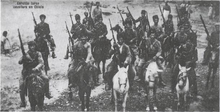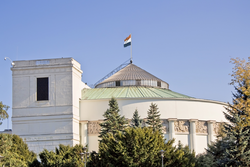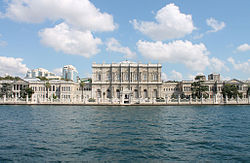the Cape
Federacy of the Cape Fédératie capétienne | |
|---|---|
Motto: "La patrie est mon droit" "The homeland is my right." | |
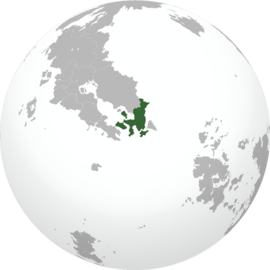 Location of the Cape (dark green) | |
| Capital and largest city | Cape Town |
| Official languages | Capétien |
| Recognised national languages | Kiravic Coscivian, Cartadanian, Cahokian |
| Government | Federal parliamentary constitutional republic under a dominant-party state |
| Kil Furey | |
| Taresa Lanerā | |
• Marshal of the Stanera | Nancy Pellise |
• Auditor-General | Barrach O'Bammagh |
| Legislature | Supreme National Assembly |
| National Auditorium | |
| National Stanera | |
| Independence from Kiravia and Cartadania | |
• Declaration of the Federacy | October 7, 1901 |
• Occupation of the Cape | May 12, 1938 |
• Republican restoration | October 7, 1951 |
| Population | |
• Estimate | 127,912,766 |
• Density | 159/km2 (411.8/sq mi) |
| GDP (nominal) | estimate |
• Total | $4.51 trillion |
• Per capita | $35,544 |
| HDI (2021) | very high |
| Currency | Cape Saer (₴) |
| Driving side | right |
The Cape, officially the Federacy of the Cape, or occasionally as the Second Republic of the Cape (Capétien: Deuxième république capétienne), is the easternmost country in Crona. It is bordered on the north, east, and south by the Odeneru and Cathay Oceans. It covers 1,193,152 km² and has over 127 million people, largely concentrated in its namesake Cape Peninsula. The Cape is a multiethnic and multicultural society, with a majority of the population having mixed ancestry between the country's three primary ethnic groups, Kiravian, Cartadanian, and Cronan. The capital and largest city is Cape Town, which concurrently serves as one of seven provincial capitals.
For thousands of years, the Cape was home to various indigenous peoples. In the 1600s, however, Cartadanian and Kiravian explorers began to settle the country's eastern coast. Their colonies and dominions would expand throughout the 18th and 19th centuries. Disputes over political representation and forced colonial assimilation would lead to the Capetian War of Independence in 1897, led by Melvyn Kalma and the nascent Republican Nationalist Party, which established independence in 1901. The tumultuous young republic, weakened by political violence and rampant power struggles following Kalma's death in 1922, was invaded and occupied by Paulastra and Arcerion during the Second Great War. A Reclamation war soon took place, re-establishing the republic in 1951. A slow series of reforms between the 1990s and the 2000s would transition the state from a one-party military dictatorship to a representative, if flawed, democracy - with the country entering into a rapid period of economic growth and industrialization that continues today.
The Cape today is a federal parliamentary constitutional republic with a single-party, multi-caucus political system under the constitutionally-dominant Republican Nationalist Party. The country ranks as a semi-democracy in the Liberty Index and is categorized as a authoritarian democracy. The Cape is a key member of numerous international organizations such as the League of Nations. It is a regional power with a growing economy and a highly developed market. Traditionally fuelled by the state-led exploitation of natural resources, manufacturing, and international shipping, the economy has grown significantly in its service sector during the past three decades - with no small part due to foreign investment. Cape Town ranks as one of the most economically active and important urban areas in Crona, home to the continent's largest stock and commodity exchanges by market capitalization. The nation has high levels of economic freedom yet maintains numerous state-provided social services, ranking highly on continental indicators of education, health care, and human development.
Etymology
The Cape is named after the Cape Peninsula and its landmark Cape of the Segunda Cabeça. As a great cape, seen as the final waypoint between the Odeneru and the Cathay, sailors and settlers began to refer to it as simply "the Cape.” The name stuck, and the Kiravian colony that would eventually exist took on the name Axerka Kesta (literally "cape colony"). The Cape is one of a handful of countries in which the definite article is used in its English-language name.
History
Indigenous peoples

It has been accepted that the first humans to settle the lands of the Cape arrived at least 12,000 years ago. Indigenous peoples in the Cape today can trace their ancestry to those groups, the two most significant being the Cahokian and Anahuak peoples.
Throughout history, those Indigenous societies became increasingly complex. Although it is difficult to estimate the Indigenous population of the Cape at the time of Occidental colonization, the generally accepted number is between 700,000 and 4 million; with the modern Federacy's Executive of Culture recognizing a figure of 2.4 million.
By the 1200s, these societies would coagulate into the Cahok Confederation, a loose federation of three Cahok nations and two Anahuak nations, people of the longhouse. The Confederation would expand to include most of the interior of the modern-day Cape, fighting two documented wars against Polynesian empires and the Indigenous states of modern-day Paulastra.
Initial contact between Occidental settlers and the nations of the Confederation were relatively peaceful. Those of Indigenous mixed descent played a vital role in establishing Kiravian colonies and trade connections. Indigenous relations with Kiravian Capetians remained strong until independence. However, conflict quickly arose with the Cartadanian settlers, who, starting in the 18th century, began to conquer parts of the Confederation and attempted to assimilate them into their culture. Such actions reached a peak before the War of Independence, with forced integrations and deportations.
Occidental colonization
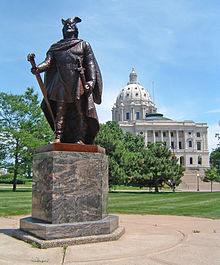
The first documented arrival of Occidentals in the Cape was on Christmas of 1612, by Cartadanian conquistadors. In 1616, Kiravian explorers arrived, erecting a crude effigy of the Marble Emperor on the southern tip of the Cape Peninsula and declaring the establishment of Cape Town. Settlers to the “city” would only truly arrive a decade later. Cartadanian settlers established the permanent settlement of Sao Suro in 1621. These two cities would serve as the heart of the Cape’s fur and gold trades and soon became the respective capitals of Kiravia’s Cape Colony and Cartadania’s Natalia Colony, largely settled by the Burgonophone minority. Skirmishes would break out between the two colonies in the 1670s, culminating in the Little Beaver War, fought over the control of the fur trade and access to the Confederate nations.

Fleeing turmoil in the nascent Cartadanian Republic, much of Cartadania’s Lusophone wealthy left for Natalia. A coup, led by the newly-arrived upper class, took place in 1697 during the republic’s tumultuous Red Year. This coup deposed the former colonial administration for an oligarchic corporate administration. The 17th century would see a de-facto independent Natalia declare total war on the Cahok Confederation. Within a year, the Confederation was overrun and split into a variety of nations, with a large proportion of its eastern territories conquered. Such acts came to the chagrin of the new Federative Republic of Cartadania, although any solid police action was found unfeasible by the new Cartadanian Congress.
New arrivals from Kiravia, largely lower-class, peasant farmers and middle-class merchants, settled Cape Colony starting in the 1700s. These peasants soon found themselves with little arable land left, providing much of the impetus for the Great Beaver War fought between Urcea and Kiravia. Throughout this time, Cape Town became a vital military port, an important trading port for the Alshar spice trade, and the gateway to Crona's abundant gold, resource, and fur trade. Some of the earliest mixed-race communities developed during that time in Cape Town. Relations between Cape Colony and the remnant nations of the Confederation were relatively cordial compared to their relations with the Natalia colony. However, they were likewise annexed to halt the growth of the Natalian sphere of influence through the Treaties of 1792, which granted Kiravia control over their foreign policies.
Despite continuous immigration, by the 1880s, only a tiny minority of Cape Colony’s population had been born overseas. Such distance from Great Kirav allowed the development of a unique, Capetian culture and self-governance measures. At the same time, the situation in Natalia became untenable - by the 1890s, the colony’s working-class and Indigenous populations were soon on the brink of open revolution.
Independence and confederation
The Place de la Colonie massacre (1896) in Natalia, where thousands of Indigenous and working-class protestors were shot dead by government forces, prompted the establishment of the National Revolutionary Army (NRA) - whose chapters quickly popped up across both colonies. Under Melvyn Kalma, a prominent advocate for independence and decorated former general in the Kiravian Foreign Legion, a War of Independence was waged starting March of 1897 to overthrow both colonial governments and to unite the peninsula under a new state.
By June of 1897, following significant uprisings in Cape Town, Kiravia exited the Cape. The NRA’s provisional government was recognized provided the new state remained a Kiravian ally and allowed the continuation of Kiravian trade. The transition of statehood from Cape Colony to the NRA's Cape Town government (subsequently known as the Government of the Supreme National Assembly) was formalized on June 22, 1897. By 1898, Natalia’s Indigenous population was in open revolt, with most local chiefs and leaders pledging allegiance to the NRA. “Liberating the peoples of Natalia” became official policy at the first convocation of the Supreme National Assembly. The invasion of Natalia, the Great Offensive, would conclude in February of 1901. On October 7, the newly formed Federacy of the Cape was declared the successor state to both Cape Colony and Natalia, with Melvyn Kalma serving as the first Prime Executive.

Kalma subsequently introduced many reforms to Occidentalize the Cape, such as secularizing the state, instituting a Western code of fundamental rights, and instituting industrializing reforms with the goal of transforming the Cape into a modern nation state, governed as a constitutional republic with a secular constitution. To this end, the political activities of the NRA were separated into the civilian Republican Nationalist Party - which was to govern the country under a single-party period of tutelage until such reforms were complete. Such reforms proved unpopular with certain Catholic Lusophone groups in the former Natalia and with many Indigenous groups who aimed for the restoration of the Confederation. Anti-secularist, anti-Occidentalization, and anti-tutelage (the Kadets Rebellion) revolts broke out in 1907, 1908, and 1911, respectively, which were suppressed with military force.
20th century
After Kalma’s death in 1922, the reformist-dominated RNP considered the Cape sufficiently developed to exit the period of political tutelage, beginning the first multi-party period of the Federacy of the Cape. Four major parties contested the 1924 elections: the Communist Party, the Constitutional Democrats (Kadets), the Levantine fascist Levantine Worker’s Front, and the Republican Nationalist Party. The RNP was controversially returned as the majority with a margin of barely one percent - with the months following being permeated with brutal street fighting between Republican, Kadet, Front, and Communist militias.
Contemporary era
Following the Reclamation, the Cape emerged from the Second Great War an authoritarian state. While the National Reclamation Government and military rule was formally disestablished in 1951, the one party-state and its provisions to the Fundamental Statutes remained. The new government used these statutes to suppress the opposition of all stripes, democrat and communist alike. While these laws were quickly rolled back after the death of Chief Arle Ilkaskar in 1957, more than 60,000 people had already been imprisoned or executed.
While significant political reforms were made in the 1960s, including the reformation of the party-state system into one more akin to a “mass movement” accountable to the people, the Cape would retain a single-party government. Under this system, the country was industrialized and reconstructed. This “period of good feelings,” as it is known in the Cape, led to rapid economic growth and modernization. For three years between 1969 and 1972, the nation was the fastest growing economy in the world, backed up by emerging state-owned megacorporations and demand for Capetian manufactured products.
With economic growth proceeding, the government used its newfound legitimacy to enact a variety of Restarkist social reforms - dismantling the Kiravian and Cartadanian rite Catholic Church, enacting policies to level the economic imbalance between the genders and the races, and becoming, against popular will, the first nation in the world to recognize LGBT rights.
As economic growth slowed in the 1980s, the RNP’s grip on power became more and more unstable. Calls for the dissolving of the party-state came from an empowered democratic opposition, and Cape Town was rocked by a series of terrorist attacks committed by a rump Communist insurgency. To combat this, the party appointed the authoritarian Viktor Alkrix to the Prime Executure in 1989. His heavyhanded May Constitution, which enshrined the party-state provisions as permanent, and the live-broadcasting of the sinking of the reformist mutineers of the CN Akevarin would lead to a series of major protests on Republic Day of 1992. The Republic Day revolution, as it would be called, was initially crushed by the Cape Armed Forces - although mutineers on the ground soon carried out a coup against Alkrix in favour of the reformist wing of the RNP, restoring the old constitution and beginning democratic reforms.

Free elections were held in 1994 - although the RNP retained political leadership with a guaranteed third of the National Stanera under the idea of Planoarita politics, elections to those RNP deputy positions were likewise open to the public. The second Prime Executive of the post-democratization period, Republic Day revolutionary Isnet o’Niall, continued the reforms, restoring the rights of the Church and beginning a period of reconciliation for wartime acts. While the Cape remains under de-jure RNP leadership, o’Niall’s reforms dismantled the RNP’s “guaranteed third” in 2001 and devolved significant power to provincial governments and party caucuses.
Throughout the 1990s, the state-led corporate economy was likewise dismantled, with almost every megacorporation privatized, broken up, or shifted into worker ownership. These dismantlements, combined with the lifting of restrictions on foreign investment, propelled the second period of economic growth that continued into the 2010s.
The destruction of the Istana and the killing of Prime Executive Simon Seamus and his cabinet in 2021 would lead to the seizure of power by Chief of the Republic Joao Trinnan. He was quickly deposed by the military in the 2021 Cape coup d'état. The military government would lead the Cape into the Final War of the Deluge, with Capetian forces playing a crucial role in the Liberation of Cetsenscalia. Free elections were held in 2024, and then in 2025, in which Taresa Lanerā of the burgeoning “nationalist” faction of the RNP was elected as the first woman Prime Executive of the Cape.
Geography
Situated at the eastern end of Crona, the Cape is located on the plains of southern Crona and the Peninsular Cronan Highlands extending from Mount Paektu. The country totals 2,335,077 kilometres squared, making it the 12th largest country in the world. The south is dominated by open, temperate lands, manifest in the Cape Peninsula, Cebek, and the Janusar area as arable plains and elsewhere as savannah. These plains are permeated with rolling hills, and in the Cape Peninsula, surrounded by escarpments. The central north is primarily composed of highlands and mountains. The nation's highest point, the dormant volcano of Mount Paektu, is contained within. Dividing the north and south is the Pretoria River and its watershed, which flows westward from the mountains of the north and the hills of the south into the Songun Sea. Almost the entirety of the non-peninsular south lies within its drainage basin. The tropical rainforests of Palastra, fed by the Jet Stream, extends into the Cape's northeast.
Climate
The Cape is situated south of the subtropical climate zone, although the oceans and the Songun provide a more continental and temperate climate to coastal areas. Owing to its subtropical positioning, its climate remains relatively stable throughout the year. It has two seasons - roughly corresponding to a moderate summer and a moderate winter. Average temperatures in the north ranges from 31.1°C in July to 2°C in February, while temperatures along the southern coast of the nation range from 28.3°C in July to 14.1°C in February.
Politics and government
The Federacy of the Cape is a federal parliamentary republic constitutionally led by the Republican Nationalist Party under a period of Planoarita politics (literally “politics in accordance with the popular will”) - the final stage on the road to full constitutional politics. The Capetian political system operates under the 1951 Federal Constitution, which recognizes the RNP as the “leading force”.
However, since the 1990s, the Cape has been fundamentally structured as a representative democracy. Although the RNP holds a plurality of seats in the bicameral Supreme National Assembly, since 2016, each seat has been contested in free elections. The SNA, comprised of the 503-member National Stanera and the 28-member National Auditorium (which also serves as the national ombudsman and auditor), constitutionally holds "all powers of governance". In practice, however, the SNA serves primarily as the country’s legislature, with executive power held by the Prime Executive and the Cabinet, and judicial power wielded by the Supreme Tribunal of the Federacy and the Constitutional Court of the Federacy.
Deputies to the SNA are elected every four years on the principle of universal adult suffrage. These deputies, in turn, appoint the Chief of the Republic, who serves as the ceremonial head of state and commander-in-chief of the armed forces. The member of the National Stanera who can obtain the confidence of a majority of the lower house is appointed by the Chief of the Republic to act as the Prime Executive, who serves as the head of government.
Politics
To make the nation strong, we must each sacrifice his freedom.
Melvyn Kalma
Since the founding of the republic, the dominant political current in Capetian politics has been Restarkism - support for Melvyn Kalma’s reforms. It is enshrined as the country's constitutional guiding ideology, and the guiding ideology of Kalma's own Republican Nationalist Party.
Restarkism today is manifest as support for a nationalist democracy with a secular constitution and an Occidental, liberal culture. Owing to the turmoil of the first multi-party period, the Second Great War, and the Reclamation, Restarkism posits a phased plan for the implementation of constitutional democracy. The "first stage of national construction", a one-party state led by the RNP, took place between 1951 and 1994. The second stage, Planoarita politics, where the RNP leads a guided democracy, is currently in place. The final stage, constitutional politics, or full liberal democracy, remains promised.
Restarkism's autocratic aims have found themselves opposed throughout history by Longhouseism, an unrepresented anti-Occidental ideology that advocates a traditional and decentralized system of democratic governance that models the former Cahok Confederation. It has also been opposed by the liberal-democratic Kadet movement, currently represented by the Constitutional Democratic Party.
Although free elections with third parties (the most prominent being the Constitutional Democrats and the Republican Commonwealth Federation) have shaped the Capetian political scene for 30 years, involvement within the RNP remains the main form of political participation. In the past 20 years, the party has become divided between multiple caucuses across the political spectrum. These caucuses have de-facto parties and the main driver of political change, with the pre-election RNP open primaries considered by many as the de-facto national election.
Law
The supreme law of the Cape is the 1951 Constitution, which establishes a federal republic. Its inviolable Fundamental Statutes guarantee rights and freedoms for the Planoarita period - namely the freedoms of thought, speech, assembly, and association - which any government cannot override or amend. However, a notwithstanding clause (derogatory clause) allows the Supreme National Assembly to unilaterally suspend certain sections of the constitution for up to 6 months.
The nation's judiciary, consisting of the Supreme Tribunal and the Constitutional Court, plays a vital role in federal governance. Although subject to the use of the derogatory clause, the Constitutional Court maintains the power to overturn executive and legislative decisions. At the same time, the Supreme Tribunal plays a prominent role in interpreting legislation and ensuring the constitutionality of politics. The National Auditorium nominates candidates to both courts, with their nominations subject to approval by the Chief of the Republic.
A form of common law based on the Levantine code prevails in all parts of the Cape, with criminal law a responsibility of the federal government and is uniform nationwide. Law enforcement, however, remains the primary responsibility of provincial governments and is primarily conducted by municipal and provincial police forces.
Federal subjects

Internally, the Cape is divided into seven provinces in a symmetric federation. Although, in theory, each province is granted wide-reaching authority, final power remains with the federal government in the capital of Cape Town - with the Department of State for the Provinces granted the ability to manage inter-provincial relations. Each province is governed by a parliamentary system similar to that of the federal system, with a Premier elected by each provincial legislature to serve as the head of government. The powers of provincial governments are limited in scope to fields such as public healthcare, education, and public housing.
The provinces are, in turn, divided into 112 municipalities and non-urban districts.
| Province | Provincial capital | Largest city | Population (2020) |
|---|---|---|---|
| Cape Province | Cape Town | Cape Town | 51,212,872 |
| Pretoria | Pretorē | Pretorē | 34,834,714 |
| Valega | Jauhanesar | Jauhanesar | 12,399,724 |
| Natal | Sao Suro | Sao Suro | 11,065,240 |
| Cahoka | Cahokia | Cheyenne | 9,799,090 |
| Kaskada | Thoasar | Ilosar | 6,335,964 |
| Cebek | Bréasar | Kemalpasa | 2,265,162 |
Foreign relations
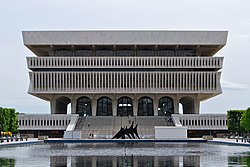
Since the introduction of Planoarita politics, the Cape's international relations have been based on the 16th Amendment of the Federal Constitution: establishing self-determination, diplomacy, and cooperation as the fundamental principles on how the Capetian state should interact with other countries and organizations. According to the Constitution, the Chief of the Republic acts as the nation’s chief diplomat with broad powers to determine foreign policy objectives, although the task commonly falls to the Prime Executive.
The Cape’s formerly belligerent and ideological foreign policy has softened since the 2000s, although elements of it remain; the country shares tense or lacks formal diplomatic relations with a handful of ideologically opposed League of Nations member states. Contemporary Capetian foreign policy is based heavily on the principle of multilateralism - it is a founding member of the Southern Crona Conference and the informal League of the Free Republics. The nation seeks partnerships with fellow Cronan, Coscivian, and Gaelic countries; it participated alongside them in the Final War of the Deluge.
Military
The Cape Armed Forces are the national military of the Federacy of the Cape. Born out of the National Revolutionary Army, the Cape Armed Forces have evolved to become one of the most well-funded militaries in the Eastern Hemisphere. It consists of the Cape Ground Forces, the Cape Aerospace Forces, the Cape Republican Navy, and the Cape Strategic Forces.
As of 2025, the military is comprised of almost a million active-duty personnel. Most citizens, regardless of gender, are drafted into the armed forces between the ages of 18-27 for a period of up to 12 months. The country can call upon a force of almost two million reservists in times of war. The armed forces have historically served an outsized role in Capetian politics and are perceived as the guarantors of the nation’s independence. The country, therefore, devotes a relatively high 4.7% of the national GDP on defense; with the funds spent on the maintenance of a large tank force, a blue-water navy, and a suspected stockpile of nuclear weapons to be delivered through a growing fleet of nuclear submarines. As of 2024, Capetian forces remain deployed in Kelekona.
Human rights
The human rights record of the Cape has been subject to international condemnation and scrutiny. Particularly, the Cape’s combination of a dominant-party system, a restricted opposition, and the frequent subversion of the civilian control of the military has led to the country’s description as an authoritarian democracy - if not an outright “authoritarian regime.” In 2020, the nation was ranked 16th out of 50 with a score of 6.73 on the Liberty Index, placing it as a hybrid regime. Although Capetians retain strong personal freedoms, civil liberties, and a government relatively free of corruption, the state has been criticized for restricting opposition groups, the freedom of speech, and freedom of the press. A number of foreign governments, NGOs, and press organizations have alleged many assaults on press freedom - with organizations identifying over 51 jailed journalists (even including members of the editorial staff of Restarka, the governing party's newspaper) over the last 10 years.
In 2014 and 2017, the Supreme Tribunal struck down and dissolved political parties that violated Planoarita measures, with the Constitutional Court doing the same in 2016 and 2022 against groups that violated the Constitution’s Restarkist provisions of state secularism. In 2021, the Cape Armed Forces carried out a coup d'état against an unpopular presidential coup against the established political system. Throughout, the security services-dominated deep state, colloquially referred to as the Republican Guard, has continually remained active in defense of the status quo.
Economy

The Cape has a social market economy with a skilled labour force and a low level of corruption. It is among the most developed economies in Crona, having experienced rapid GDP growth in the mid-1990s as a function of foreign investment following political reform. The nation’s GDP growth has now slowed to approximately 5% annually, with the country’s tertiary sector now fuelling growth in comparison to its primary and secondary sectors. The country’s mixed economy has ranked highly in economic freedom since democratization and features an “above average” household disposable income in the Eastern Hemisphere. The Cape is a party to a variety of free-trade and customs agreements, most prominently with Faneria and Kiravia. The Cape Town Stock Exchange is the largest in Crona by market capitalization.
The state-owned enterprises that once dominated the Capetian economy were transferred into worker-ownership throughout the 2000s, with the economy today primarily composed of these large cooperatives and a burgeoning private sector. Of these cooperatives, National Oil, Cape Automotive Corporation, and Republic Bank rank as the largest and most internationally prominent - leading the Cape’s primary, secondary, and tertiary sectors respectively. Other former state-owned cooperatives continue to dominate the country’s primary and secondary sectors, while newly-established cooperatives and private businesses largely comprise the tertiary sector.
With a long tradition as a coastal nation between Alshar and the Occident, and in control of the Songun Straits, the Cape is a hub for shipping in both the Odeneru and Cathay Oceans. The Port of Cape Town is located along the intersection of two of the most busiest shipping routes in the world. A vital transshipment point for goods heading to the Occident, Crona, or Alshar, the Cape is the 5th largest trading entity measured by imports and exports. Other industries such as banking, financial services, and tourism contribute heavily to national GDP.
Government spending constitutes a large part of the Capetian economy as well. The federal and provincial governments subsidize or fund programs of universal healthcare, universal pharmaceutical care, social welfare, universal education, and subsidized post-secondary education. Contributions towards these programs and services largely originates from a land value tax.
The Cape spent approximately $41.2 billion in domestic research and development in 2020, of which $12.5 billion was provided by either the federal or provincial governments to create a “Restarkist science and technology economy”. The country has been ranked within the top 10 globally for global innovation. The Federal Space Executive maintains one of the largest space agencies in Crona.
Income, wealth, and poverty

The Cape has an "above average" GDP per capita in Crona, and ranks as one of the richest nations on the continent. A majority of this growth took place between the 1990s and the 2000s, with the welcoming of foreign direct investment and market reforms. The dissolution of the megacorporations into worker-owned cooperatives distributed much wealth from state elites to the general public, forming the basis of a sizeable middle class with above-average economic power. The Cape has an unemployment rate of 4.2%, with 72% of the adult population employed. Of these, approximately ~45% are employed within a cooperative. These efforts are supported by welfare measures designed to "raise the floor", funded by a steep land value tax.
Although the reversal of the proletarianization conducted by the party-state has proven largely successful, the Cape remains a country marred by the inequalities of the past. Wage differences between the highest-paid management roles and the lowest-paid workers continues to grow as the private sector expands, with wealth outside of the middle class highly concentrated in a handful of private elites.
Recent reforms have attempted to distribute this new wealth more equally, for example, for the first time in Capetian history, the introduction of a Occidental-style income tax. In recent years, the state has attempted to emphasize the role of worker-owned cooperatives, and the party has finally reformed the country's largest labour union, the Association of Republican Labour, into a viable collective bargaining organization.
Infrastructure

As of 2021, personal transportation in the Cape remains dominated by the private automobile - operating on 1.9 million kms of public roadway. The National Highway System's 3,126 kilometres of controlled-access highways hold a near monopoly on interprovincial travel, although they are supplanted by a variety of provincially and municipally maintained freeways. The Capetian highway system connects to Etzil in the west through the second-longest bridge-tunnel in the world, the Atl I-Kalma Fixed Link.
The Fixed Link likewise connects to the country's growing freight and passenger rail network. Cape National Railways connects the bridge and major cities through a higher-speed rail service as construction for the Strakiterma, a proper high-speed rail service, continues. The first section of which, Cape Town to Pretorē, is to open in 2028 while extensions to Cahokia, Sao Suro, and Jauhanesar are to open in the early 2030s.
Urban and suburban public transit competes with the automobile for transportation in metropolitan areas. Provincially run commuter rail, s-train, and regional rail services are prominent across the Cape. Urban rapid transit systems, such as Cape Town’s KabosaRT, Pretorē's Metro, and Novasar's busway network are likewise common.
In 2020 there were 87 airports in the Cape, 11 of them being international.
Demographics
As of 2021, the Cape is a nation of 127 million people. Its population density stands at 159 per kilometre squared, with an overall life expectancy of 71.4 years. The Cape’s population growth has slowed but remains over 4%, placing the nation in stage 3 of demographic transition and in the midpoint of the demographic dividend. With birth rates beginning to fall, the government has turned to enacting a variety of pro-natalist policies. However, immigration is becoming one of the main drivers of population growth today. A majority of the nation's urban centres are aligned along the Cape Peninsula and the Pretoria Basin, where the largest cities and economic centres of Cape Town, Valena, Pretorē, and Novasar are located. A rapidly growing urbanization rate has inflated the urban population greatly; with the country now home to two megacities - Cape Town and Pretorē respectively.
Ethnic groups
Formed from centuries of conquest, assimilation, and intermixing, the country today is multiethnic and multicultural. A majority of the population identifies with four major ethnic groups, Kiravian, Cartadanian, Cahokian, or the largest, Capetian or “Costizo”, which denotes mixed ethnicity between the three former groups.
A growing percentage of Capetians are other immigrants. Arriving in waves, these have included Protestant Aengles and Latinics from Levantia, Daxian and other Alshari, and most recently Cronans from Varshan, Kelekona, and other Cronan-majority South Cronan states - which form a majority of the country’s estimated 1.1 million illegal immigrants.
Language
According to the Fundamental Statutes of the Constitution, the Cape’s sole official language and state language is Capétien, a Latinic language descended from settler Cherantais, that is spoken natively by a vast supermajority of the country’s population. Three languages are given “national status” namely Kiravic Coscivian, Cartadanian, and Cahokian, the latter two of which are official languages in the provinces of Natal and Cahoka, respectively.
While state services can be received and legal arbitration conducted with any of the three national languages, Capétien serves as the primary lingua franca of the population and is the language of government, mainstream society, education, and commerce. A majority of Capetians living outside of the urbanized Cape Peninsula or Pretoria Basin, therefore, speak two or more languages - a native national-status language at home and within their community, and Capétien without.
Religion
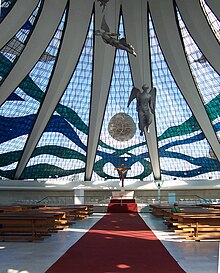
The Federacy of the Cape is a secular state with a constitutionally defined separation of church and state in all matters, including education. Religious congregations in the Cape have been considered private organizations by the federal government since 1951, and have lost their status as charities. This has led to a decline of religious institutions nationwide, with a majority of the religious population practicing outside of institutions. Although state atheism was practiced during single-party rule, freedom of religion and religious pluralism are now protected under the Planoarita-era Constitution.
Catholicism, at 44.2% of the population, barely nudges out Irreligion at 40.9% as the most popular religious belief, with the folk religion of the Cahok people following in a distant third. Protestantism, Islam, and other religions consist approximately 10% of the population. Out of the religious population, 67% view religion as being "unimportant" in their lives.
[Capetian rite church]
Education

With a legacy laid down by Restarkism and Melvyn Kalma’s reforms, the Cape is one of the most educated countries in the world with a literacy rate of 99.7%. The Department of Nationalist Education is responsible for pre-tertiary education, although this responsibility has been largely handed down to the respective ministries of education of each province. It is funded publicly through both federal and provincial taxes, with 12 years of compulsory education provided for free in public schools. Education is given primarily in Cape Coscivian, however, schooling in all three national languages is likewise available throughout the country.
The Cape has one of the most well-developed systems of post-secondary education throughout Crona. The near-entirety of this system is publicly funded and available for Capetians at a subsidized price, or for free in the case of certain programs of study deemed crucial by the government. 32 Capetian universities rank in the top 500 globally.
Healthcare
The Cape’s system of universal healthcare is administered by the provinces and regulated by the Department of National Health. Healthcare is publicly funded in a single-payer system, and since the War of Independence and the era of Kalma’s reforms, has been considered a “national right”. Following reforms in the 1990s, most services today are performed by private entities, with the government ensuring national standards yet staying out of daily care.
Culture
The Cape’s culture draws influence from its Coscivian, Cartadanian, Cahok, and other roots. Since the War of Independence, an official state policy of assimilation and Capetianization has taken root - establishing rigorous cultural programs in the fields of education, music, art, food, and sports to create a fully formed national identity. Capetian culture is therefore the result of a modern effort to create an “Occidental” state in the “Occidental sense of the term” through the fusing of its three primary influences. Capetian humour, a unique blend of satire and irony, is a defining factor of the country’s national identity.
Symbols
Art
Literature
Media
Cuisine



